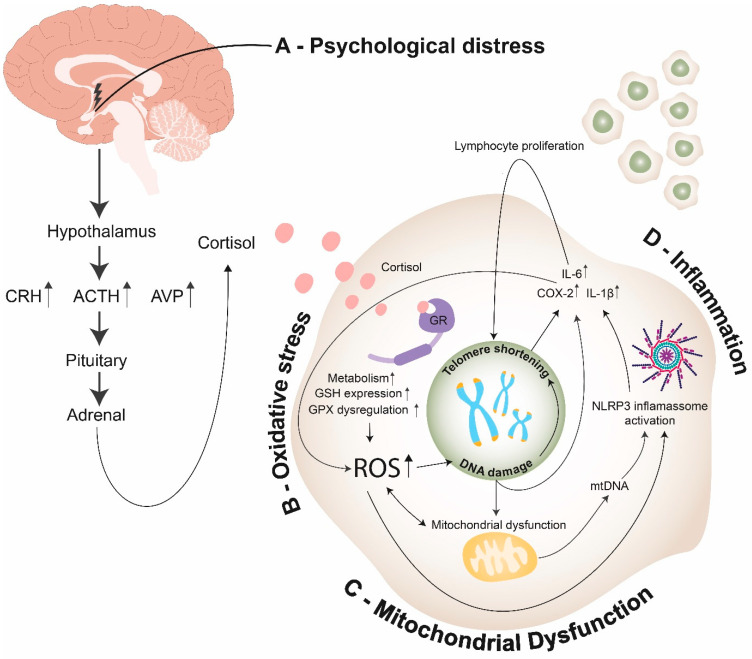Figure 3.
Endocrine, cellular, and molecular mechanisms linking psychological distress to telomere shortening: (A)—Psychological distress promotes cortisol release through the hypothalamus–pituitary–adrenal axis (HPA axis); (B)—In the intracellular environment, cortisol promotes the activation of GR, leading to an increase of cell metabolism, GSH expression and GPX dysregulation, thus enhancing the production of ROS. ROS can promote telomere shortening through different pathways: (1) Promoting direct DNA damage; (2) Promoting mitochondrial dysfunction, which induces an increase of ROS; (3) Promoting NLRP3 inflammasome activation. (C)—Mitochondrial dysfunction promotes ROS production and mtDNA release on cytosol, which results in telomere shortening through activation of NLPR3 inflammasome; (D)—DNA damage and NLRP3 inflammasome activation promote COX-2 and pro-inflammatory cytokine expression, resulting in the synthesis of ROS and lymphocyte proliferation—thus inducing telomere shortening. (ACTH—adrenocorticotropic hormone; CRH—corticotropin-releasing hormone; AVP—arginine vasopressin; ROS—reactive oxygen species; GR—glucocorticoid receptor; GSH—glutathione; GPX—glutathione peroxidase; mtDNA—mitochondrial DNA; NLRP3 inflammasome—NOD-, LRR- and pyrin domain-containing protein 3 inflammasomes; IL-6—Interleukin 6; IL-1β—Interleukin 1β; COX-2—cyclooxygenase-2).

